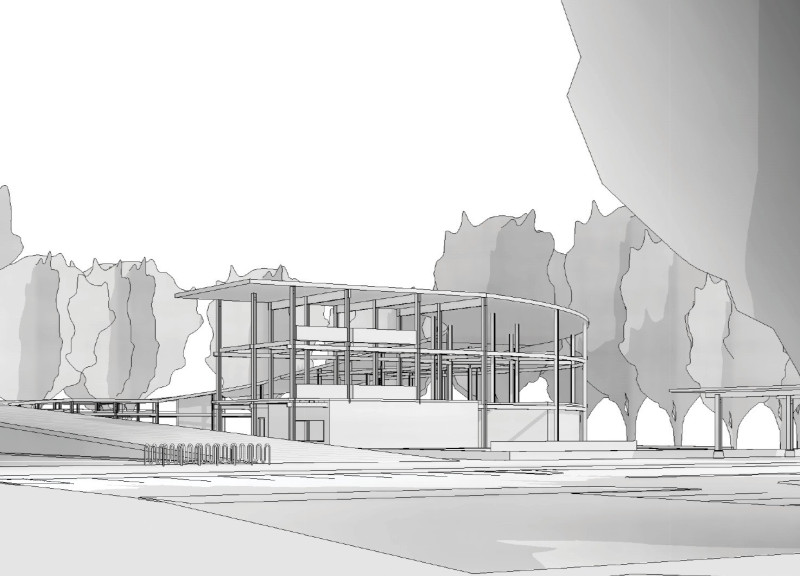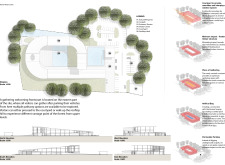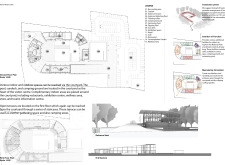5 key facts about this project
The Kemeri Visitor Centre is located in Greater Kemeri National Park in Latvia, positioned between the Kemeri Bog and major access roads. It serves as a gathering point for visitors, enhancing their experience of the park's natural environment. The design concept features a Timber Pavilion, which aims to create a connection between the architecture and the surrounding landscape, encouraging visitors to engage with both.
Architectural Concept
The design features a central Timber Pavilion that redefines how visitors interact with the national park. A spacious courtyard serves as the heart of the centre, promoting social interaction. It allows sunlight to flood the space and creates pathways that lead into the natural beauty of the bog or up to the rooftop for scenic views. The layout fosters a sense of exploration.
Sustainability and Integration
Sustainability is a key focus in the design, which aims to minimize its impact on the environment. Local timber is used to create floating structures that sit lightly on the land. This choice not only reduces the ecological burden but also helps visitors feel connected to the nearby trees and plants. The project encourages awareness of nature while providing comfortable spaces for visitors.
Functional Diversity
The centre is designed to meet a variety of visitor needs. It includes cafés, an exhibition area, wellness facilities, and places for recreation. An artificial bog is featured in the central pool, which mirrors the characteristics of the surrounding Kemeri Swamp. This addition provides an interactive experience for visitors, inviting them to engage with the landscape in a new way.
Materiality
Timber is the primary material used, reflecting local building traditions while offering a modern interpretation. A concrete base is incorporated to manage water absorption, ensuring the structure's durability. The combination of these materials supports the overall design's intent to blend well with the environment, allowing nature to influence the visitor experience.
The design culminates in various outdoor spaces that encourage interaction with the surrounding landscape, promoting a sense of exploration and enjoyment for all who visit.






















































